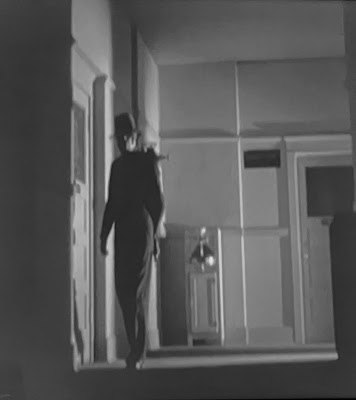Dear readers, in this post we're going to look at a film that has it all. Two murders by two different killers, for one thing. Lots of high concept musical production numbers, including one at the end featuring Duke Ellington and his Orchestra. Lots of nearly naked cuties in those production numbers. The introduction of a classic big band tune, "Cocktails for Two." The introduction of another song that may not be a classic in the same way, but still--"Sweet Marijuana". All from a film made in 1934 and featuring not one but TWO Alabama connections. Let's investigate.
On September 12 1933, a musical revue/murder mystery opened at the New Amsterdam Theatre in New York City. "Murder at the Vanities" was just one of many "Vanities" mounted by producer Earl Carroll over the years. One secret of his success was the fact his shows featured the most scantily-clad singers and dancers on Broadway. This particular show ran until early November before moving to the Majestic Theatre and finally closing on March 10, 1934. I scanned the lengthy cast list for this production; the only name I recognized was Bela Lugosi.
On May 18, 1934, Paramount Pictures released a film version. The movie barely beat the July 1 final implementation of the Hays Code, which severely restricted subject matter in Hollywood films. Murder was thus one of the last Pre-Code films, those made from 1930 when the code was first accepted by the studios until that final deadline. Many of these films are still striking today in their depictions of drug abuse, crime of all sorts, abortion, prostitution, infidelity, promiscuity, homosexuality and the display of copious amounts of bare female flesh.
Murder at the Vanities takes place during a performance of a musical review of that title. Danish actor and singer Carl Brisson plays Eric Lander and actress/singer/future game show panelist Kitty Carlisle is Ann Ware; the two are the stars of the show. Ware has replaced Rita Ross (Gertrude Michael) as both the female lead of the show and in Lander's heart. The pair are getting married the next day. Naturally Rita is not too happy about this situation, since she loves Lander, too.
The film has an interesting structure, alternating between the production numbers and the police investigation going on backstage. Thus the entire film happens in real time except for a few flashbacks near the end. Other stars include Jack Oakie as producer Jack Ellery and Victor McLaglen as police lieutenant Bill Murdock.
I'm sure by now, dear readers, you're thinking, "This is all very nice, but what are those Alabama connections?"
Those connections are Gertrude Michael and Gail Patrick, both natives of the state. Michael was born in Talladega and graduated from Talladega High School. She started at the University of Alabama, but soon left and spent several years studying music in South Carolina, Cincinnati and Italy. By 1929 she was on stage back in Cincinnati, and Broadway soon followed. She made her first film in 1932. Other films and then television shows followed until her death on Christmas Eve in 1964.
Patrick's first film was also in 1932. Born in Birmingham, she graduated from Howard College. On a lark she entered a Paramount Studios beauty contest and did not win, but was awarded train fare to Hollywood. She appeared in numerous films, including such well known ones as Brewster's Millions and My Man Godfrey. She retired in 1948, but keep busy with other projects. For instance, she served as executive producer for the entire television run of Perry Mason from 1957 until 1966. She died in 1980.
I've done a blog post on Patrick in my series on film actresses from Alabama before 1960. I'm planning one on Michael in the future.
As you might imagine, this film has been discussed by various film bloggers over the years. Some like it for its sheer inventive craziness, others can't seem to wrap their heads around it. You can read some of those takes at The Mystery File, Pre-Code.com, and Random Pictures Blog. The film is 89 minutes long.
I really enjoyed Murder at the Vanities. The costumes and sets are jaw dropping and the dialog is often snappy and funny. Of course, you have to overlook the silliness of the whole thing in order to enjoy it. Something I did notice is that we hear their applause but never see the audience in the theater.
Murder at the Vanities sort of strikes me as what might have resulted if Samuel Beckett and Busby Berkeley collaborated on a murder mystery musical. Or something.
The full length video of the film is available on YouTube but for some reason is awkwardly cropped. However, if you watch it you can follow the action pretty well. Murder is also available on the 2009 six disc set "Pre-Code Hollywood Collection."
More comments are below some of the images.

























































